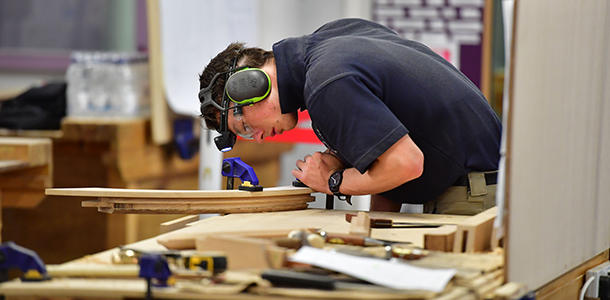
(Photo Credit: WorkskillsUK)
Mark Pisano is a professor of public administration at the University of Southern California Sol Price School of Public Policy. For 31 years, he served as executive director of the Southern California Association of Governments (SCAG), the nation’s largest regional planning agency. He is the author of The Puzzle of the American Economy, which describes how demographic transformations will place a drag on economic growth and increase stress on public budgets. This is part four of four columns on what these changes mean for California's future.
Income inequity, despite the attention and policy initiatives in the nation and the state over the past decades, continues to grow and the gap widens.
Why? One reason is that the hidden impact of macro demographic trends – our population is growing older and slower – are not well understood or directly addressed. If California is to achieve the California Economic Summit’s ambition for a prosperous, sustainable and equitable California, public policies need to be grounded in these demographic realties.
Few variables matter more to equity than income. During the first decade of this century, a large number of Californians were at that stage in their lives where their incomes were growing faster than other age cohorts. The tipping point occurred mid-way through the first decade, as more of the baby boomer bubble began to retire. The income effect of these changes is significant, as discussed in previous blogs, and is affecting the distribution of income among the income categories: very low, low, middle, upper middle, and high.
These income categories are “age blind.” Older people with declining incomes were added in increasing numbers while fewer younger workers making more were being added into the mix, changing the distribution among these quintiles and reducing income, particularly in the lower quintiles – by a lot.
Between 2000 and 2015 the income demographic penalty (unrealized income) was $2.74 trillion. This unrealized income is two and a half times larger than the income loss from manufacturing jobs in the same period. Our changing demographic income penalties are unquestionably altering the income gap.
We are now experiencing more growth of older people with lower incomes, than in the working age population with higher incomes. In future decades, these changes will be even more pronounced as more baby boomers retire at a rate of 10,000 per day for decades to come.
Our existing equity strategies must be altered if we are to get ahead of the widening gap. Dealing with the gap will also provide a compelling incentive to deal with upward mobility. If we are to grow our economy and not increase our environmental footprint, our best strategy is to focus our efforts on making every person an economic contributor. In other words, “No one is disposable.” We are, whether we like it or not: interdependent. The success of our economic future incentivizes the solution for equity and upward mobility.
The strategies outlined in previous blogs are the starting point: Lifelong education for multiple careers throughout our lives: We do not retire, but move to a career that suits our personal capacities. Educating our large prison population for work. Altering safety net programs so that work and a career is the objective and assistance is to get people back on their feet. And partnering within the community so that all youth are on an educational track.
In The puzzle of the American Economy, I profile the New Village Academy for Women, where single moms involved in the criminal justice system are graduating at normal rates. There are multiple other examples of these partnerships throughout the state, many involving the Economic Summit’s regional partners.
Accelerating and mobilizing these efforts with the understanding that increasing the working age population and increasing the labor force participation rate so that employment and economic growth is maximized is our best equity and upward mobility strategy. Key to this collective effort is that it is everyone’s responsibility.
At the core of this strategy is one underlying concept: “work.” Pope Francis in his recent writings, “On Care for Our Common Home” notes that we are all born to work. Through work we provide not only for ourselves but serve others. This is essential for human dignity. Failing to provide for this opportunity creates the social dysfunctionality that we are increasingly observing. The fascinating insight of this strategy is that it also has a basic economic underpinning, providing income and consumption that drives a sustainable economy. Most important it clearly explains why our futures are so interdependent.
Read Part 1 of the series: Our Puzzling Economy: How demographic changes are disrupting growth
Read Part 2 of the series: No One is Disposable: Growing California’s working population critical to future economy
Read Part 3 of the series: Our Future is 3-D: How to better pay for public goods through economic growth

